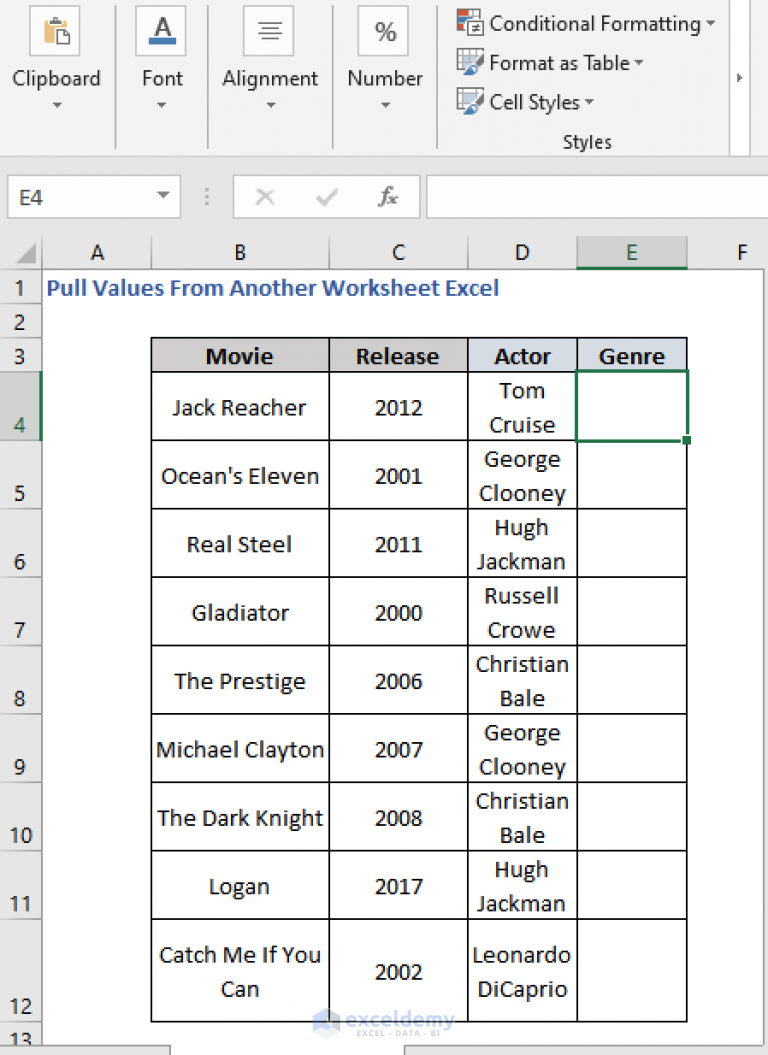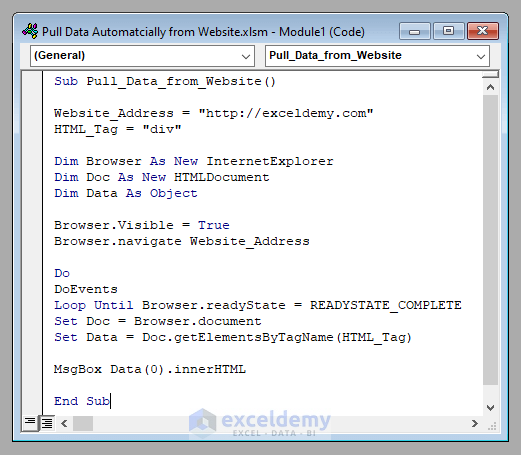5 Easy Ways to Pull Data from Excel Sheets

Excel has long been an indispensable tool for data analysis and reporting, especially in business, finance, and data-centric fields. However, extracting and transforming this data into a format usable by other software can often be a tedious and repetitive task. Fortunately, there are several streamlined methods to pull data from Excel sheets that cater to a wide range of technical expertise, making the process far simpler. Here's how you can efficiently extract data from Excel:
1. Manual Export

Manual Export: The simplest approach for users who only occasionally need data or are working with limited datasets.
- Open your Excel workbook.
- Select the cells you wish to export.
- Use the copy function to transfer the data.
- Paste this data into the destination program (be it another spreadsheet, a document, or a database form).
💡 Note: This method is straightforward but can be cumbersome when dealing with large datasets or frequent data updates.
2. CSV Conversion


Comma-separated values (CSV) files are widely compatible and easy to use in most data processing tools:
- Open your Excel file.
- Choose File > Save As.
- Select CSV (Comma delimited) (*.csv) from the “Save as type” dropdown.
- Save the file.
The CSV file can now be read by many programs, including SQL databases, Python scripts, and other software tools.
3. Excel VBA (Visual Basic for Applications)

For automation and advanced users, VBA offers powerful control:
- Open your Excel workbook.
- Press Alt + F11 to open the VBA editor.
- Insert a new module and write a macro script to automate data export. Here’s a basic example:
Sub ExportData() Dim ws As Worksheet Set ws = ThisWorkbook.Sheets(“Sheet1”) ws.Range(“A1:D10”).CopyWith CreateObject("NewObject") .CreateTextFile "C:\YourPath\DataExport.csv", True .WriteText ws.Range("A1:D10").Value, False End With
End Sub
🛠️ Note: VBA allows for complex data manipulation but requires some programming knowledge.
4. API Integration

Many software applications provide APIs to interact with Excel, enabling real-time data extraction:
- Utilize APIs like Openpyxl for Python or SheetJS for JavaScript.
- Set up an environment to run API calls.
- Send requests to fetch or push data directly from Excel to your application.
API integration provides flexibility and immediate access to data without needing to export files manually.
5. Excel Database Links


Linking Excel directly to a database not only helps in retrieving data but also in keeping it synchronized:
- Set up an ODBC or JDBC connection to the database.
- Within Excel, go to Data > Get Data > From Database and choose your database type.
- Create a connection and map the table or query results directly to the Excel worksheet.
This method ensures real-time data updates between Excel and the database.
🌐 Note: Database connections require setting up appropriate permissions and ensuring data security.
Other Tools and Services

For users with more diverse needs, here are additional tools:
- Power Query - Part of Excel’s business suite, it allows you to pull data from multiple sources, including web data or files, with transformation capabilities.
- Google Sheets API - If your work involves collaboration or cloud-based solutions, consider using Google Sheets API for data retrieval and integration with web applications.
Summarizing these approaches, you can pull data from Excel efficiently with minimal technical expertise using manual methods or delve into more automated, real-time systems like API integration or database linking. The choice depends on your frequency of data extraction, the size of the dataset, and your technological environment. By mastering these methods, you'll be better equipped to work with data across different platforms, enhancing your productivity and data management capabilities.
How do I automate data extraction from Excel on a daily basis?

+
Use a combination of VBA scripting in Excel for the data extraction and possibly schedule it to run using Windows Task Scheduler or a similar tool on other operating systems.
Can I link Excel directly to a SQL Server?

+
Yes, Excel can link directly to SQL Server through ODBC or JDBC connections, allowing for real-time data syncing.
Is it possible to import Excel data into a web application?

+
Yes, using APIs or web services like Google Sheets API, or by converting Excel files to JSON or XML format that can be consumed by web applications.



